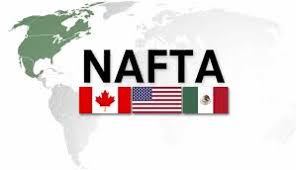Trump, Lighthizer discuss China, NAFTA trade talks – White House

PALM BEACH, Florida (Reuters) – President Donald Trump was briefed on Saturday by U.S. trade envoy Robert Lighthizer on U.S. trade with China and talks on revising the North American Free Trade Agreement with Canada and Mexico, a White House spokeswoman said, as the administration considers several new tariff moves in coming weeks.
The meeting comes as Trump mulls whether to impose broad restrictions on steel and aluminum imports and punitive actions against China arising from an investigation into Beijing’s alleged theft of intellectual property.
Lighthizer also briefed Trump on China’s economy and pending trade enforcement actions, as well as the NAFTA negotiations, White House spokeswoman Lindsay Walters said in a statement from Florida, where Trump is staying at his Mar-a-Lago resort. She did not provide details.
Lighthizer currently is preparing for the next round of NAFTA talks in Montreal. Washington has taken a hard line in the negotiations, which appear stalled with just two rounds of left, saying that concessions are the only way for Canada and Mexico to keep the deal.
Canada this week welcomed Trump’s suggestion that NAFTA talks could be extended beyond March when Mexico’s presidential election campaign kicks into high gear.
Trump’s opportunity to impose new tariffs or trade quotas follows a U.S. Commerce Department Section 232 investigation that looked into whether foreign steel imports are a threat to U.S. national security. The department submitted the long-awaited report to the White House on Thursday.
Next week, the results of a separate investigation of rising aluminum imports will go to the White House.
China’s excess production capacity for both steel and aluminum has emerged as a major trade irritant for the United States and Europe, prompting them to consider new steps to protect domestic industries and jobs from a flood of Chinese imports.
Meanwhile, China reported on Friday that exports and imports growth slowed in December after surging in the previous month, adding to signs of ebbing economic momentum as the government extends a crackdown on financial risks and factory pollution.
A synchronized uptick in the global economy over the past year has been a boon to China and much of trade-dependent Asia, with Chinese exports in 2017 growing at their quickest pace in four years.
The sharp December imports slowdown, however, is raising concerns that the world’s second-biggest economy faces domestic-demand pressure as authorities turn off cheap credit and restrict speculative financing.
